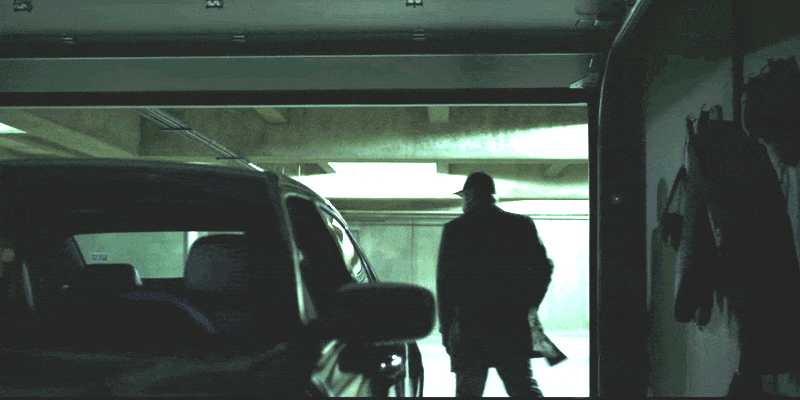When Car Keys Kill
Why proximity keys are the worst.

Car keys work on a simple chain of cause and effect. The key is the cause, ignition is the effect. Remove the key and the car won’t run. Proximity keys, however, don’t work like this. Causality is broken.
The physical ‘key’ doesn’t start the car. Its mere proximity does. For example, you can forget the keys on a table and still start the car. You can drive all the way to work. Only when you try to start the car again will you realize that the cause has been removed. This is annoying.
When you get home, you can take the keys with you without turning off the car, and it can slowly fill your house with carbon monoxide. You can physically remove the cause, but the effect continues. This is deadly.
You can also have the car in neutral, push the stop button (which won’t work) and walk away. Your car can then run you over, or your children. For the sake of convenience, we have broken cause and effect.
This isn’t just terrible UX. On a car, it’s UX that kills.
When cars don’t stop
Through simple user error, a person can kill every plant and animal in their home. This is criminally bad design.

“After 75 years of driving, my father thought that when he took the key with him when he left the car, the car would be off,” said Doug Schaub, whose father, Fred, died of carbon monoxide poisoning last year.
The gas level in Fred Schaub’s home was at least 30 times the level that humans can tolerate. His body was found in his bed, with a rash on his head and chest.
“The plants inside the house lost their leaves,” said Doug Schaub, his son. (New York Times)
Dozens of people have died like this — by leaving their car running in their garages. They thought they were holding the cause (the key), but the effect was running on, unimpeded.
I’ve experienced this myself on a hybrid Toyota Camry. The electric engine is basically silent, so I often can’t tell if the car is on or off. I can’t trust the physical key because there is none. It’s hard to trust my ears cause I can’t hear anything. Even the lights are kinda ambivalent. I have to just jam the button, stare at it, listen and hope for the best. This is very dangerous. It’s a UX disaster built-in, especially on hybrid cars.
When cars roll
A car can passively kill you, or it can just run you over. This is why it’s important for the driver to always have physical control of the vehicle, and for the UX to ensure this. Since the 1990s, you have been unable to remove a key unless the car is in park. For good reason, this prevents the car from rolling away and killing people. For some bad reason, however, this regulation does not apply to proximity keys. This kills people.

In 2016, actor Anton Yelchin was crushed by his own Jeep Grand Cherokee. This was because Jeep had made another dangerous design change — an electronic gear shifter that gave no physical indication of where it was. Another solution in search of a problem.
If this was a keyed car he still might have been OK. If he had accidentally put the car in neutral, the car would tell him, by refusing to release the key. However, because his vehicle was push-start, the key was just a second point of failure.
The push-button ignition won’t shut off the engine if not in park, increasing the risk of the vehicles rolling away after drivers have gotten out. (CBC)
Yelchin’s proximity key told him nothing. He walked away from the car, thinking that the vehicle was off and in park. And it should have been. Physically he had done everything right — he had moved the gear shift and pushed the button.
However, the car was actually in neutral and turned on. It rolled down his driveway to painfully and slowly crush him to death. The car was still running when his friends found the body hours later.
This was blamed on the gear-shift, which had already been recalled, but proximity keys were a part of the problem as well. It’s all from the same root cause. Manufacturers taking clear, physical controls and making them electronic and obscure.
Why physical controls are good
A car is heavy machinery. The driver always needs to be in control, and the machine needs to be definitely off when they walk away. The convenience of not reaching for your keys does not outweigh these safety requirements. At the least, any new system should follow the same usability and safety rules. Saving two seconds isn’t worth even one life.
Personally, I don’t even find proximity keys that convenient. I only use them if I borrow a car and I always find it confusing and idiosyncratic to find the start button. Every car seems to put it in a slightly different place. Some accursed vehicles have a key fob which isn’t a proximity key at all. You have to find some unmarked hole and use it as a giant key. Then I find it confusing to turn the car on and off. I find myself cursing the technology and wishing for an old-fashioned key.
With a physical key, you don’t have to think about anything, your body just knows. It’s just muscle memory. I can start my 2007 car blind, on instinct alone. The gear at the end is park and the key turns to start. If I mess anything up the system tells me, it refuses to surrender the key. When I’m holding the key I know the beast is dead and that I can walk around. Yes, I have to lift my arm, but I know that my children won’t lose their heads.
We’ve gone too far in prioritizing convenience
Keyless entry is cool and most of the time it just works. However, any UX design has to think of the edge cases, and whether a change introduces any fatal errors. And proximity keys do. They can kill you while you sleep or while you walk around. They’re also just illogical and annoying. They don’t follow the law of cause and effect, and they’ve become needlessly complicated as a result.
Does this mean that the car key should never evolve? No, keyless door entry is nice, and Tesla replacing the key entirely with a phone at least gives you one less thing to carry. What I am saying is that any change to this vital function should be thought out, should match all existing regulations and should, at a minimum not kill us.